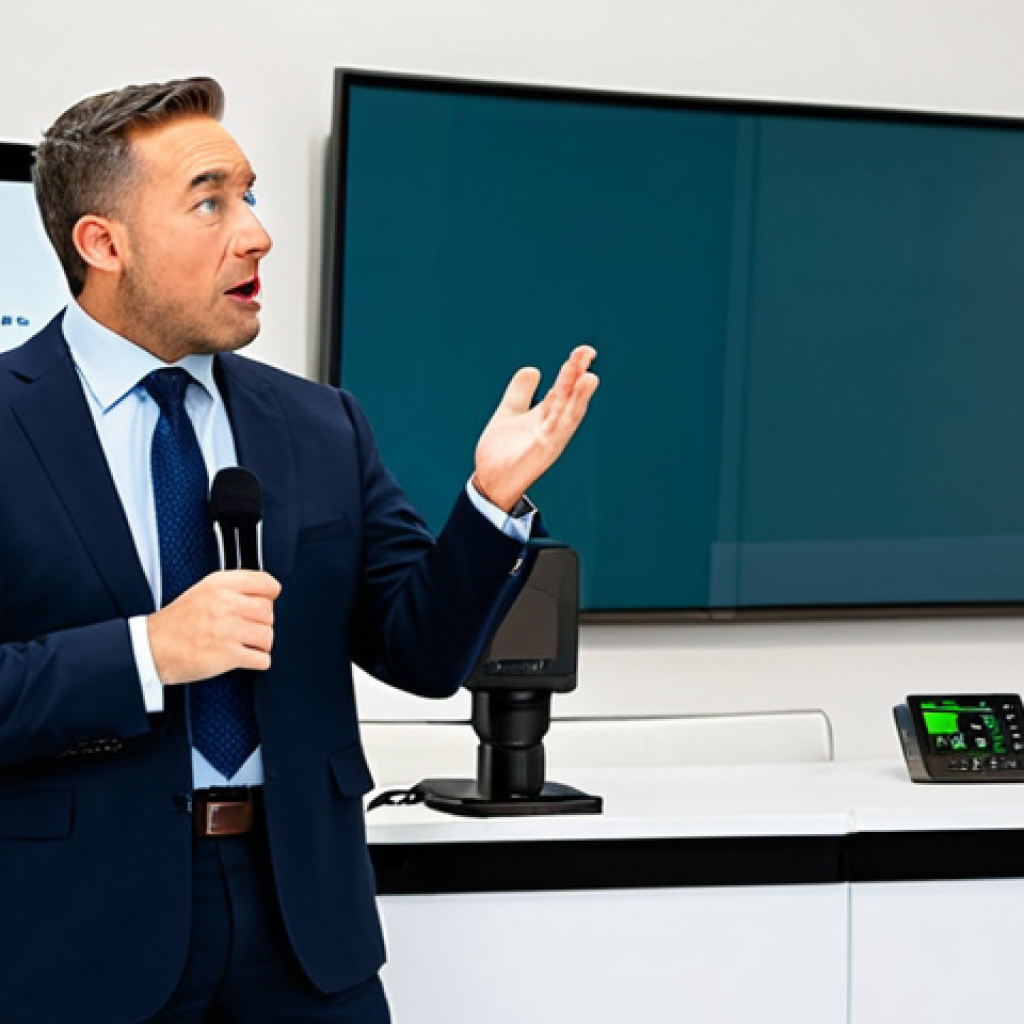There’s a unique kind of pressure that hits you when you step onto that auction block for the practical exam. I remember it vividly – the lights, the hushed anticipation, and the sheer terror of trying to maintain that perfect chant while simultaneously reading the room, all under the scrutinizing gaze of the evaluators.
It’s a make-or-break moment, far beyond just memorizing patter. From my own time navigating these high-stakes scenarios, I’ve seen firsthand how easily nerves can unravel even the most meticulously prepared candidate, transforming a confident call into a stuttering stumble.
But here’s the kicker: the game is evolving. With the surging popularity of hybrid auctions and the increasing reliance on seamless digital integration, mastering the traditional live bid is just one piece of a much larger, more complex puzzle.
Today, you’re not just charming a room; you’re wrestling with potential streaming delays, managing online bids alongside in-person ones, and ensuring your voice projects clearly across both physical and virtual spaces.
I’ve witnessed situations where a sudden tech glitch threw an entire performance off, or an unexpected bid from a silent online participant completely disrupted an auctioneer’s rhythm.
These new layers of technical and logistical challenges, coupled with the age-old battle against stage fright and maintaining razor-sharp focus, are what truly test an aspiring auctioneer’s mettle in the 21st century.
It’s about demonstrating adaptability and resilience in a rapidly shifting landscape, proving you can command *any* auction environment. Let’s find out exactly how to tackle these common pitfalls.
Conquering the Vocal Gauntlet and Bid-Call Mastery
There’s no getting around it: your voice is your primary instrument. I recall a pivotal moment in my early career, during a particularly grueling 12-hour estate auction, when my voice started to crack.
It wasn’t just physical fatigue; it was the sheer mental strain of maintaining perfect pitch, rhythm, and clarity for hundreds of bids. The practical exam amplifies this pressure by tenfold.
You’re not just speaking; you’re performing, and every single syllable is under intense scrutiny. It’s about developing an almost athletic resilience in your vocal cords and mastering the subtle nuances of your bid-call to keep the energy high and the audience engaged, even when your throat feels like sandpaper.
Many aspiring auctioneers stumble here, focusing solely on speed rather than the critical balance of projection, articulation, and pacing that truly makes a bid-call effective and not just a rapid-fire blur.
The goal is to make every bid easily understandable, yet the rhythm compelling enough to pull potential buyers along. It’s an art form, really, a delicate dance between control and energy.
1. Mastering Breath Control and Vocal Projection
One of the most fundamental yet often overlooked aspects is proper breath control. I used to think I could just power through with sheer volume, but that only leads to vocal strain and fatigue.
Imagine trying to run a marathon without training your lungs – it’s the same concept. Learning to breathe from your diaphragm, projecting your voice from your core rather than your throat, makes an immense difference.
It allows for sustained power and clarity, even over long periods or in large, echoey rooms. During my own practical exams, I focused intently on this, trying to channel every ounce of air efficiently.
It’s about more than just being loud; it’s about making sure your voice carries, resonates, and fills the space without sounding strained or shrill. This is where the practice of vocal warm-ups and cool-downs becomes indispensable, treating your voice like a professional athlete treats their muscles.
2. The Art of the Rhythmic Bid-Call
A truly effective bid-call isn’t just a string of numbers; it’s a rhythmic, almost hypnotic patter that guides the audience. I’ve observed countless auctioneers, and the ones who excel possess a natural musicality to their call.
It’s about finding that sweet spot where the rhythm is fast enough to build excitement but slow enough for everyone, including online bidders, to follow.
I personally found that practicing with a metronome helped immensely in maintaining consistent pacing. Varying your cadence—speeding up slightly when a bid is imminent, slowing down for emphasis or to give people time to think—is a sophisticated technique that sets apart the good from the great.
It’s not just about what you say, but *how* you say it, the ebb and flow that keeps the attention riveted on you and the item.
Synchronizing Your Cadence with the Digital Tide
The world of auctions has expanded far beyond the physical room, and this shift presents an entirely new set of challenges that can trip up even seasoned professionals.
I remember one particular charity auction where the internet connection flickered during a crucial bid on a high-value item. The panic in the room was palpable, and the auctioneer, unfamiliar with integrating online bids seamlessly, lost his rhythm completely, causing confusion and almost losing the sale.
This wasn’t just a technical glitch; it was a failure to adapt to the hybrid environment. The practical exam now often includes elements of managing online bids alongside live ones, demanding a completely different kind of awareness and timing.
You’re not just reading the room; you’re reading a screen, managing chat functions, and ensuring that online bids are recognized just as quickly and clearly as a hand raised in front of you.
It’s about blending two distinct auction experiences into one cohesive, fluid performance, ensuring fairness and clarity for all participants.
1. Integrating Online and In-Person Bids
The real challenge lies in making the transition between live and online bids feel utterly seamless. It requires a keen eye on your monitor and an ear for the room.
I’ve developed a system of visual cues and verbal acknowledgments to bridge this gap. For instance, clearly stating “I have a new bid online at $500, now $525 in the room,” helps keep everyone on the same page.
The trick is to ensure that online bidders don’t feel like second-class citizens, yet the live energy isn’t stifled by looking at a screen too much. It’s a delicate balance, a constant dance between the two worlds, ensuring every participant feels seen and heard, regardless of their physical location.
2. Managing Technical Contingencies
Every auctioneer who deals with hybrid formats eventually faces a technical hiccup. The mic cuts out, the live stream freezes, or the bidding software glitches.
I’ve learned that anticipating these issues and having a backup plan is not just smart, it’s essential for maintaining your composure and the auction’s flow.
Knowing how to quickly switch to a backup microphone, having a pre-arranged signal with your tech support, or even having a contingency plan for a brief online outage can save an auction.
It’s about projecting confidence even when things go awry, and showing that you’re prepared for anything the modern auction environment throws at you.
The Psychology of the Auction Floor: From Nerves to Nerves of Steel
Stepping onto that auction block, especially for an exam, can feel like walking a tightrope over a shark tank. The sheer weight of expectation, the critical eyes of evaluators, and the self-imposed pressure to perform perfectly can turn even the most confident person into a quivering mess.
I recall my own hands shaking so badly during my first major auction that I worried I’d drop the gavel. But I quickly learned that controlling your internal state is just as crucial as controlling your voice.
It’s about transforming that raw nervous energy into focused intensity, channeling it into your performance rather than letting it derail you. This isn’t just about suppressing fear; it’s about understanding its roots and developing mental resilience strategies that allow you to maintain laser-sharp focus and an engaging presence, no matter the circumstances.
The ability to project calm, even when you’re internally battling a storm, is a hallmark of a truly professional auctioneer.
1. Harnessing Pre-Performance Anxiety
Anxiety before a performance is natural, but it doesn’t have to be crippling. I’ve found that adopting specific pre-auction rituals can significantly calm the mind and body.
For me, it’s a combination of deep breathing exercises, positive visualization (picturing a successful auction), and a quick review of my key notes. It’s about creating a personal routine that signals to your brain that it’s game time, not panic time.
Transforming that nervous energy into excitement is a powerful shift; it’s about telling yourself, “This is it, I’m ready,” instead of “Oh no, what if I mess up?” This mental preparation is a game-changer for maintaining composure.
2. Maintaining Focus Under Pressure
During the heat of the moment, with bids flying in and the clock ticking, it’s incredibly easy to lose focus. One missed bid, one miscalculation, and the entire flow can be disrupted.
My strategy involves a combination of active listening and quick mental check-ins. I try to create mental anchors, such as looking at a specific point in the room or making direct eye contact with a bidder, to ground myself.
It’s like a mental reset button. The ability to quickly recover from a slight stumble or a momentary lapse in concentration is vital. It’s not about being perfect, but about being able to swiftly regain your stride and maintain control of the narrative, no matter what distractions or challenges arise.
Crafting Your Unique Auctioneering Persona
Every great auctioneer has a distinct style, a unique blend of personality and professionalism that captivates an audience. I’ve seen some who are witty and engaging, others who are sharp and precise, and still others who exude warmth and approachability.
The biggest mistake I made early on was trying to emulate someone else’s style perfectly. It felt forced, unnatural, and ultimately, wasn’t authentic to me.
The practical exam is not just about demonstrating technical skill; it’s about showcasing *who you are* as an auctioneer. It’s finding that sweet spot where your natural charisma shines through, making you memorable and trustworthy.
This isn’t just about showmanship; it’s about building a connection with potential buyers, making them feel comfortable and eager to participate in *your* auction.
It’s about demonstrating confidence, expertise, and a touch of individuality that sets you apart in a crowded field.
1. Authenticity and Charisma on the Block
Trying to be someone you’re not is exhausting and transparent. I learned that my genuine enthusiasm and a slightly quirky sense of humor resonated far better than trying to mimic a fast-talking showman.
Charisma isn’t about being overtly flamboyant; it’s about being authentically engaging. It’s the way you interact with the crowd, the little asides you make, the confidence in your posture.
The audience can sense authenticity, and they respond to it. The goal is to be memorable for the right reasons – for your skill, your warmth, and your genuine passion for the items you’re selling.
2. Projecting Confidence and Authority
While authenticity is key, it must be paired with undeniable confidence and authority. When you’re standing on that block, you are in command. Your voice, your posture, and your eye contact should all convey that you are competent and in control.
I often remind myself that *I* am setting the pace, *I* am managing the bids, and *I* am guiding the sale. This mental state translates into a physical presence that inspires trust and encourages bidders.
It’s about owning the space and demonstrating that you are the expert, the one who will guide them to a successful transaction.
Decoding Body Language and Engaging Your Audience
The auction room is a vibrant, dynamic space, and a significant portion of the communication happens non-verbally. I remember a particularly subtle nod from a bidder once that, had I not been paying absolute attention, would have been completely missed, costing the client thousands.
It’s not just about looking for obvious hand raises; it’s about reading the subtle cues – the leaning forward, the flicker of interest in someone’s eyes, the slight shift in posture.
The practical exam tests your ability to not only call bids but to actively *read* the room and respond to its energy. This involves more than just observation; it means actively engaging with your audience, making eye contact, and even using humor to lighten the mood or reignite interest when things go quiet.
It’s about creating a connection, making each person in the room feel seen and understood, which in turn fosters a more active and competitive bidding environment.
1. Reading the Room’s Non-Verbal Cues
This is where the real art of auctioneering comes alive. Beyond the obvious bid signals, there are a myriad of non-verbal cues that can tell you if someone is on the verge of bidding, if they’re losing interest, or if they’re just observing.
I’ve learned to scan the room constantly, not just for bids, but for engagement levels. Is the energy lagging? Are people checking their phones?
This immediate feedback allows you to adjust your pacing, inject some humor, or even offer a quick recap to re-engage potential buyers. It’s about being an active participant in the room’s energy, not just a narrator.
2. Interactive Engagement and Crowd Control
An auctioneer isn’t just a caller; they’re a conductor. You need to know when to push, when to pause, and how to gently guide the bidding process. Direct eye contact, a knowing smile, or a quick, well-placed quip can work wonders.
I’ve often used light humor to break tension or re-energize a stagnant bid. Conversely, knowing how to politely but firmly manage unruly bidders or distractions is also key to maintaining control and professionalism.
It’s a delicate balance of being approachable yet authoritative, ensuring a fair and orderly process for everyone involved.
| Aspect of Performance | Traditional Live Auction Pitfalls | Hybrid Auction Additional Challenges |
|---|---|---|
| Vocal Endurance | Maintaining volume and clarity over long hours. | Ensuring consistent audio quality for both live and streaming audiences; managing mic feedback. |
| Bid Recognition | Missing subtle physical cues from bidders in a large crowd. | Synchronizing online bids (often delayed) with live bids; recognizing chat bids. |
| Audience Engagement | Keeping attention in a single physical space. | Dividing attention between physical and virtual audiences; making online bidders feel included. |
| Technical Reliance | Minimal; reliance on manual systems and personal skill. | Heavy reliance on stable internet, software, and hardware; quick troubleshooting. |
| Pacing Control | Adjusting rhythm based purely on room dynamics. | Adapting rhythm to account for potential online lag and cross-platform communication. |
Technical Prowess: Ensuring Flawless Digital Delivery
In today’s auction landscape, being a brilliant live auctioneer isn’t enough; you also need to be a quasi-tech expert. I’ve seen promising careers stumble because of preventable technical issues during online or hybrid events.
It’s not just about having the equipment; it’s about understanding how it all works together – the microphones, cameras, streaming platforms, and bidding software.
The practical exam might test your adaptability, demanding that you seamlessly transition between different technological setups or troubleshoot minor glitches on the fly.
This means having a fundamental understanding of audio levels, video feeds, and connectivity issues. It’s about being able to confidently operate the tools that facilitate the modern auction, ensuring that every participant, whether in the room or across the globe, experiences a smooth, professional, and equitable bidding process.
Ignoring this aspect is akin to an orator having a brilliant speech but no microphone; your message, no matter how powerful, won’t reach its intended audience.
1. Optimizing Audio and Visual Setup
Crystal-clear audio and a stable video feed are non-negotiable for online presence. I learned early on that investing in a quality microphone and understanding basic sound engineering (like reducing echo or background noise) makes a world of difference.
Similarly, good lighting and a stable camera angle ensure that your expressions and movements are clearly conveyed to remote bidders. It’s not about being a videographer, but about knowing the essentials to present yourself professionally.
This attention to detail builds trust and maintains the auction’s integrity, ensuring every bid is heard and every action seen clearly.
2. Software Familiarity and Troubleshooting Basics
Modern auctions run on specialized software, and knowing your way around it is paramount. From managing bidder registrations to understanding how to display items and track bids, familiarity with the platform you’re using is critical.
I always make it a point to do a full run-through of the software before any event. More importantly, being able to quickly identify and (if possible) resolve minor technical issues—like a frozen screen or a disconnected microphone—without panicking is a true test of adaptability.
It’s about minimizing downtime and maintaining a professional demeanor even when technology decides to throw a curveball.
Beyond the Hammer: Continuous Skill Refinement
Passing the practical exam is a huge milestone, but it’s just the beginning. The auction world is constantly evolving, with new technologies, market trends, and bidder behaviors emerging all the time.
I learned quickly that what worked brilliantly last year might need tweaking this year. My own journey has been one of continuous learning, whether it’s experimenting with new bid-calling rhythms, attending industry workshops on the latest streaming tech, or analyzing past performances to identify areas for improvement.
This isn’t just about staying competitive; it’s about maintaining passion and expertise in a dynamic field. The best auctioneers I know are those who are perpetual students, always looking for ways to hone their craft, refine their presence, and adapt to the ever-shifting landscape of the market.
This commitment to ongoing development is what truly distinguishes a professional from a mere practitioner, ensuring longevity and sustained success in a demanding and rewarding profession.
1. Post-Performance Analysis and Feedback
One of the most valuable practices I adopted early on was meticulously reviewing my own performances, especially during and after the practical exams.
I’d record myself, listen back to my call, watch my body language, and critically assess what went well and what could be improved. Seeking constructive feedback from mentors or trusted colleagues is equally important.
It’s easy to be defensive, but embracing critiques allows for genuine growth. This self-reflection and willingness to learn from every experience is a cornerstone of professional development.
It’s about turning every auction, every practice session, into a learning opportunity.
2. Staying Abreast of Industry Trends and Technologies
The auction industry is far from static. New online platforms emerge, regulations change, and bidder demographics shift. To remain relevant and effective, it’s crucial to stay informed.
I make it a point to subscribe to industry publications, attend conferences, and network with other professionals. Understanding market trends—what’s selling, what isn’t, and why—can also give you a significant edge, allowing you to tailor your pitch and energy to the specific items and audience.
This proactive approach to continuous learning ensures you’re always prepared for the next evolution in the exciting world of auctions.
Wrapping Up
Passing that practical exam is an exhilarating achievement, a testament to countless hours of dedication and vocal practice. But as I’ve found throughout my career, the true mastery of auctioneering isn’t a destination; it’s an ongoing journey. The skills you hone for the exam—vocal control, rhythmic precision, audience engagement, and mental fortitude—are merely the foundation. The ever-evolving landscape of modern auctions, with its blend of live energy and digital reach, demands perpetual learning, adaptation, and an unwavering passion for the craft. Embrace every auction as a chance to refine your unique voice, deepen your expertise, and build even stronger connections with both the items you sell and the people who bid on them.
Useful Information to Know
1. Join Professional Associations: Organizations like the National Auctioneers Association (NAA) in the U.S. or the Society of Fine Art Auctioneers (SOFAA) in the UK offer invaluable resources, continuing education, and networking opportunities. They’re a fantastic way to stay connected and up-to-date.
2. Explore Diverse Auction Software: Familiarize yourself with a range of popular online bidding platforms such as LiveAuctioneers, Invaluable, or Proxibid. Each has its nuances, and understanding how they integrate with live events is crucial for seamless hybrid auctions.
3. Prioritize Vocal Health Beyond Warm-ups: Consider consulting with a speech-language pathologist or vocal coach specializing in professional voice users. They can offer tailored exercises and advice to prevent strain and ensure long-term vocal endurance, which is paramount in this profession.
4. Seek Mentorship Actively: Look for experienced auctioneers willing to share their knowledge. Shadowing, asking questions, and receiving direct feedback from seasoned professionals can accelerate your learning curve far beyond what any textbook can teach.
5. Attend Industry Seminars and Trade Shows: These events are not just for networking; they’re fertile grounds for discovering new technologies, market trends, and innovative strategies that can help you adapt and thrive in an increasingly competitive field.
Key Takeaways
Mastering auctioneering hinges on a blend of vocal artistry, adaptability to hybrid environments, robust mental fortitude, and an authentic personal presence. It demands keen audience engagement, technical proficiency in digital delivery, and a commitment to continuous self-analysis and industry learning. Ultimately, it’s about transforming potential challenges into opportunities, projecting unwavering confidence, and maintaining a genuine passion for guiding every bid to a successful close.
Frequently Asked Questions (FAQ) 📖
Q: Nerves are a massive hurdle, especially with all the new tech layers involved in hybrid auctions. How do you truly conquer that gut-wrenching stage fright when everything’s on the line?
A: Oh, tell me about it! I’ve been there, stomach doing flip-flops, hands clammy, the whole nine yards. For me, it wasn’t about eliminating the nerves entirely – that’s just unrealistic.
It was about rechanneling them. I remember one particular charity auction; I was so focused on hitting every single syllable perfectly that I almost missed a crucial online bid from someone I knew was a big player.
My breakthrough came when I shifted my focus from perfection to connection. Instead of staring at the whole room, I started picking out individual faces, making eye contact, and connecting with them one by one, both in person and, through the camera, virtually.
It instantly made the overwhelming feel manageable. And for the tech stuff? I learned to trust my prep.
Knowing I’d done my mic checks, had my tech support on standby, and understood the platform inside out became my real confidence booster. It’s less about a magic cure for nerves and more about building a fortress of preparedness around yourself, so when the jitters hit, your foundation is still rock solid.
Q: Given the rise of hybrid auctions, what’s your best advice for dealing with those inevitable tech glitches or unexpected online bids that can completely throw off your rhythm?
A: Honestly, anyone who says they haven’t had a tech hiccup in a hybrid auction is either lying or hasn’t done enough of them! I once had a livestream freeze mid-chant on a high-value item – you could practically feel the collective groan from the online bidders.
My initial instinct was panic, but I’d practiced for this. The trick isn’t to prevent every single glitch, which is impossible, but to have a clear, calm protocol for when they happen.
First, you communicate immediately: ‘Folks, just a momentary technical pause, we’ll be right back with you!’ This acknowledges the issue and keeps everyone engaged.
Second, have your tech team on standby, with a direct line of communication – a nod, a quick signal. For those unexpected online bids, the ones that pop up silently and disrupt your flow?
It’s about building a flexible mental map. I visualize the room and the online screen as one fluid space. Instead of being startled, you train yourself to instantly integrate that online bid into your rhythm, almost like an unexpected participant raising their hand in the back row.
It’s muscle memory, developed through drilling hybrid scenarios, not just live ones.
Q: Beyond just managing the mechanics, how do aspiring auctioneers truly demonstrate the adaptability and resilience needed to command any auction environment in today’s rapidly shifting landscape?
A: This is where the rubber meets the road, isn’t it? It’s not just about a slick patter anymore; it’s about being a master conductor of an incredibly complex symphony.
I’ve seen some auctioneers who were brilliant in a traditional room utterly flounder when they had to manage a screen full of online bids or a sudden audio issue.
The real key to adaptability, I’ve found, is a deep-seated curiosity and a willingness to be a perpetual student. Don’t just learn the rules; understand the spirit of the auction and how technology can either enhance or hinder that.
For instance, I took the time to truly understand how different bidding platforms worked from a bidder’s perspective, not just my own. That allowed me to anticipate potential snags for them.
Resilience comes from embracing every ‘oops’ moment as a learning opportunity. I once botched a simple lot number early in my career, causing a momentary lull.
Instead of dwelling on it, I just chuckled, corrected myself, and moved on, projecting an ‘it happens, let’s keep going’ attitude. That ability to recover gracefully, to pivot without breaking stride, and to genuinely enjoy the challenge of an unpredictable environment – that’s what truly sets a 21st-century auctioneer apart.
It’s about being fluid, not rigid, and having a genuine passion for the dynamic dance of the bid.
📚 References
Wikipedia Encyclopedia
구글 검색 결과
구글 검색 결과
구글 검색 결과
구글 검색 결과
구글 검색 결과






